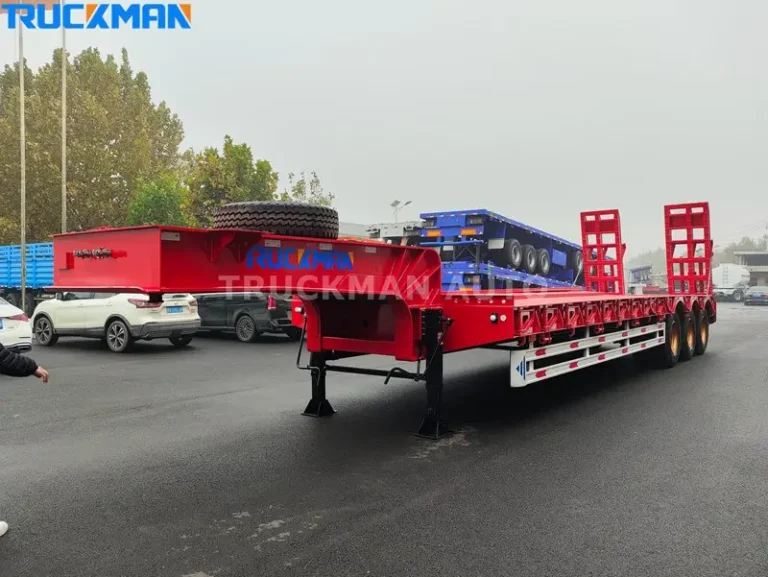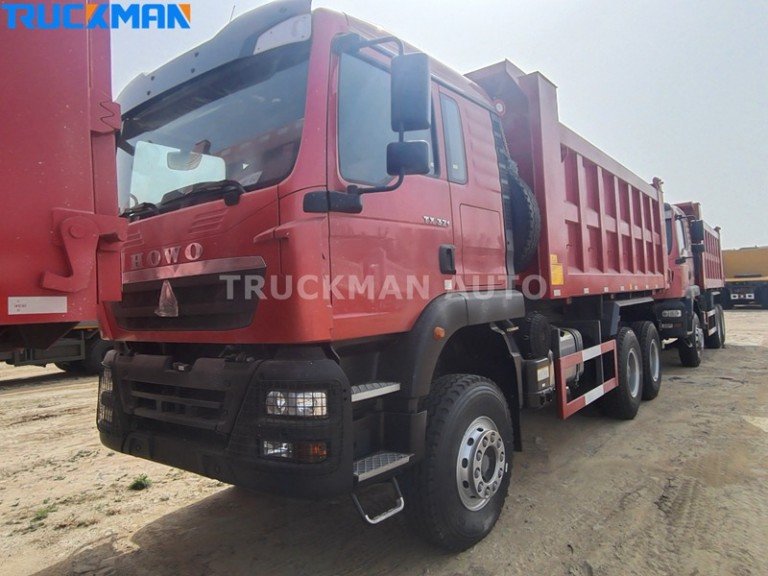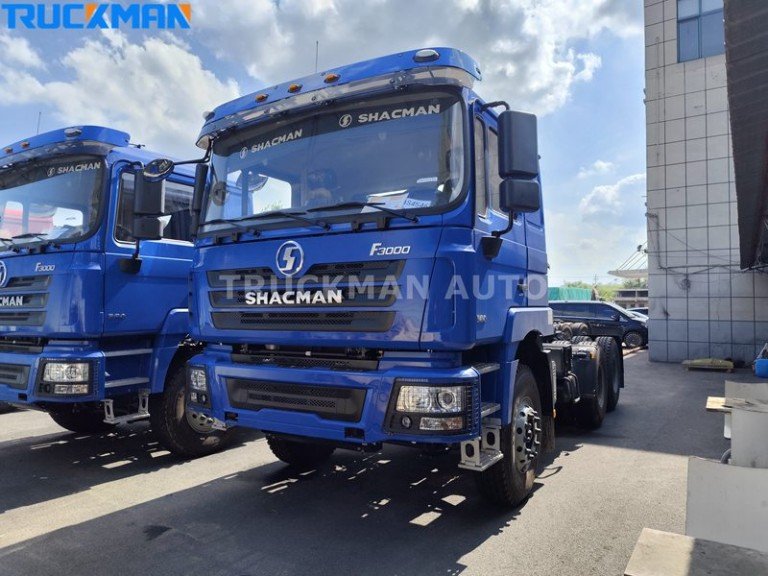Tractor trailers have two main parts: the tractor and the trailer. The tractor has an engine and a driver’s seat. The trailer carries the cargo. These large machines can weigh up to 80,000 pounds when fully loaded. They have a fuel tank capacity of 100 to 300 gallons and can travel about 1,000 miles on a single tank of fuel.
Understanding the parts and components of a tractor trailer can improve your knowledge. It also helps improve safety and how to better utilize these vehicles. As we explore the construction of tractor trailers, you’ll learn important lessons about logistics and transportation.
This guide breaks down the key components of a tractor trailer. These vehicles are known as semi-trailers. They are essential for transporting goods across the country.
Table of Contents
Introduction to Tractor Trailers
Tractor trailers, also known as semi-trailer trucks, are the mainstay of freight transportation today. They can carry up to 80,000 pounds. Tractor trailers have powerful engines and the trailers can carry cargo such as products and food.
These trucks have 18 wheels and large fuel tanks. They can travel a long distance on a single fill-up. However, they only get 6 to 7 miles per gallon, which points to the need for improved fuel efficiency.
Hauling trailers is critical in the global supply chain, and newer models such as the HOWO use less fuel. They also have safer braking systems, which is important for their size and weight.
Understanding semi-trailer trucks helps us understand their role in transporting goods. Keeping semi trucks in good condition is key. Semi-trailer trucks have a lifespan of 10 to 15 years, so regular inspections are important.
Understanding the Structure of a Tractor Trailer
A tractor trailer, also known as an 18-wheeler truck, is essential for transporting goods. Knowing its parts helps us understand how it works. It has two main parts: the tractor, or cab, and the trailer that carries the cargo.
Tractor trailer:A tractor trailer is a truck with a powered tractor and separate trailer. It can carry up to 80,000 pounds. The tractor trailer comes with a powerful diesel engine and a spacious cab. Tractor trailers are used to transport cargo over long distances.
Tractor Trailer Components
Many important parts make a tractor trailer work safely and well. Let’s learn about them one by one:
Component Description
Many important parts make a tractor trailer work well and safely. Let’s look at each one:
| Component | Description |
|---|---|
| Engine | Typically produces between 400 to 600 horsepower, with some exceeding this range. |
| Transmission | May have up to 18 gears, allowing for efficient power use while hauling. |
| Wheels | Usually has 18 wheels, including 10 on the tractor and 8 on the trailer. |
| Suspension System | Reduces road impact, enhancing driver comfort and cargo safety by up to 50%. |
| Fuel Tank | Capacity ranges from 100 to 300 gallons, with an average of around 150 gallons. |
| Cab | A spacious area designed for driver comfort during long hauls. |
| Trailer | Standard length for trailers is 53 feet, designed to optimize cargo space. |
Key Tractor Trailer Components
Knowing the parts of a tractor trailer helps us understand its role in moving goods. The tractor unit, different trailer types, and axles and suspension are key. They work together to move freight safely and efficiently.
Tractor Unit
The tractor unit is the heart of the truck, providing power and control. It has a strong engine for heavy loads. The driver’s cab, which might have a sleeper for long trips, is also part of it.
A standard semi-truck, or 18-wheeler, shows its strength. It can carry a lot of weight, making it vital for moving goods.
Trailer Types
There are many trailer types, each for different needs. Dry van trailers protect goods from the weather. Refrigerated trailers keep cargo cool. Flatbed trailers are for heavy and oversized items.
Each trailer type meets specific cargo needs. This shows how versatile tractor trailer parts can be.
Axles and Suspension System
Axles and suspension are crucial for a tractor trailer’s performance and safety. The rear axles carry about 60% of the truck’s weight when full. This ensures the weight is evenly distributed.
The suspension system handles bumps, improving the ride and handling. It makes driving smoother and reduces wear on the truck and cargo. This ensures goods are delivered safely and efficiently.
Inner Workings of a Tractor Trailer
A tractor trailer’s inner workings involve many systems working together. Each system is crucial for the vehicle’s operation and efficiency. The engine is especially important, as it powers the truck to move heavy loads over long distances.
The Functionality of the Engine
The heart of a tractor trailer is its diesel engine. It’s built for fuel efficiency and strong torque. This engine gives the truck the power to carry up to 80,000 pounds.
Efficient semi-trucks can get 6 to 8 miles per gallon. Some models even get up to 10 miles per gallon. This means drivers can travel about 1,500 miles on a full tank, which holds 100 to 150 gallons.
Role of the Transmission System
The transmission system is key in transferring power to the wheels. Semi-trucks often use manual or automated manual transmissions. These systems help control gear shifts and ensure smooth operation on different terrains.
The right transmission can also improve fuel efficiency. This boosts the tractor trailer’s overall performance.
Importance of the Braking System
The braking system is vital in a tractor trailer. Most semi-trucks use air-operated brakes that need regular checks. This system is crucial for safety, especially when the truck is fully loaded.
Braking distance for a loaded truck at 60 mph can be over 300 feet. A good braking system is essential for safe driving, especially under heavy loads.
Tractor Trailer Structure and Design
The structure of a tractor trailer is key for safe and efficient travel. Knowing about its frame and fifth wheel coupling is important for those in the transport field. The frame is the backbone, and the fifth wheel coupling links the tractor to the trailer. This makes the vehicle easier to steer and more stable.
The Role of the Frame
The frame of a tractor trailer is usually made of steel or aluminum in a ladder design. It’s strong and durable, ready to carry heavy loads. A good frame design keeps the vehicle safe and affects how it handles.
It’s important to check and maintain the frame regularly. This keeps it strong and ready for any transport job.
Fifth Wheel Coupling and its Importance
The fifth wheel coupling is vital for linking the trailer to the tractor. It makes the vehicle easier to turn and maneuver, especially in tight spots. Keeping the fifth wheel coupling in good shape is crucial for safety on the road.
For fleet operators, regular checks can prevent costly problems. Issues with the coupling can cause delays or even accidents.
Comparing Tractor Trailers to Other Freight Vehicles
It’s important to know how different freight vehicles work for logistics and transport. Semi-trucks and straight trucks have their own strengths for different needs. The truck you choose can change how fast and efficient deliveries are, and how much they cost.
Semi-Trucks vs. Straight Trucks
Semi-trucks, or tractor trailers, are different from straight trucks in many ways. They can carry more stuff in one go, which saves fuel and is better for the environment. But, straight trucks are better for city streets because they can turn easily.
Also, straight trucks can act like mobile warehouses. This means they can handle cargo without needing extra help at delivery points.
Understanding Different Truck Configurations
There are many types of trucks, like flatbed, refrigerated, and lowboy trailers for different loads. Semi-trucks, often called “18-wheelers,” can be set up in many ways. They usually have ten wheels: two in the front and four on each rear axle.
Without a front axle, semi-trailers are easier to load and unload. As online shopping grows, so does the need for straight trucks for last-mile delivery. This shows how truck designs are changing to meet new needs.
Knowing about both semi-trucks and straight trucks is crucial for those in logistics. Each has its own benefits, depending on its design and purpose.
| Feature | Semi-Trucks | Straight Trucks |
|---|---|---|
| Load Capacity | Larger volumes, efficient for bulk shipping | Moderate capacity, ideal for local deliveries |
| Maneuverability | Less suited for narrow urban streets | Highly maneuverable, can access tight spaces |
| Operational Efficiency | Lower fuel costs per unit | Functions as a mobile warehouse |
| Driver Preference | Appeals to long-haul drivers | More stops and starts, enhancing satisfaction |
| Common Applications | Long-distance transport, bulk shipping | Final mile delivery, urban logistics |
Conclusion
For those involved in freight transportation and logistics, it is vital to understand the construction of a tractor trailer. From the diesel engine to the transmission, each component is critical to achieving optimal performance. Understanding these systems helps operators make better choices and improve efficiency and effectiveness.
Truck types such as flatbed trailer trucks and enclosed carriers reflect the diversity of freight transportation. Each type has its own uses and benefits that can help companies meet their loading needs
At Truckman Automobile, we can provide you with specialized trailers as well as towing trailers as a professional trailer manufacturer. If you have any questions, you can contact us directly for a professional quote.
FAQ
What are the main components of a tractor trailer?
A tractor trailer has two main parts. The tractor has the engine and where the driver sits. The trailer carries the cargo. Both parts are key to the vehicle’s success.
How does the engine of a tractor trailer function?
The engine is a diesel type, made for fuel efficiency and power. It works with the transmission to move the vehicle forward. This makes long trips possible.
What types of trailers are available for tractor trailers?
There are many trailer types, like dry van, refrigerated, and flatbed. Each is for different cargo needs. Knowing these helps pick the right trailer.
Why are axles important in a tractor trailer?
Axles help spread the weight of the cargo. They affect how the vehicle handles and stays stable on the road. This ensures a safe ride.
What is the significance of the braking system in a tractor trailer?
The braking system is a key safety feature. It needs regular checks to work well. Most use air brakes, which are vital for stopping safely, especially with heavy loads.








